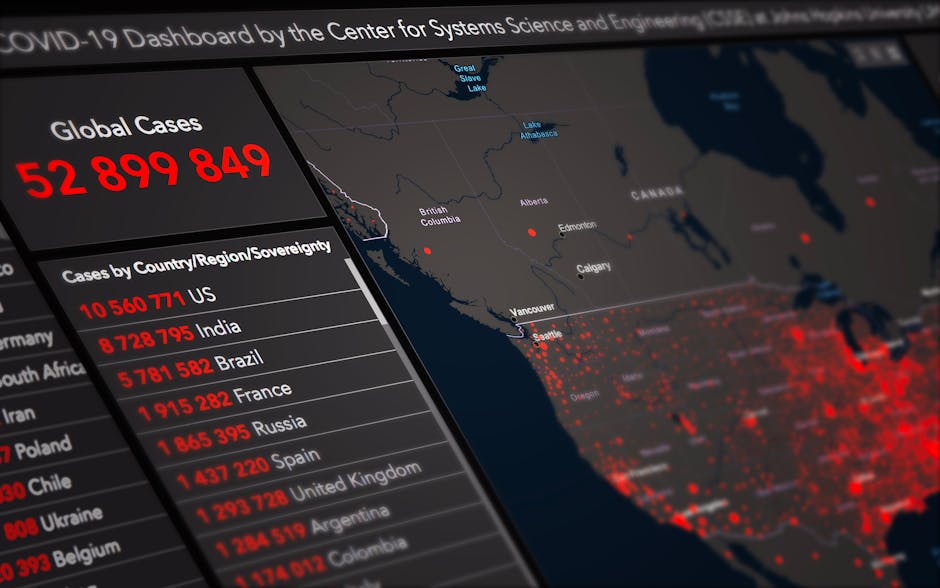Unlock encrypted content
Please enter your SSCE key to initiate on-the-fly decryption.
Decryption key: (Click cancel if you don't have the key)
Copied link to clipboard.
This feature is unavailable for free accounts. Upgrade now and enjoy all Premium benefits.
Go Premium!
This feature is unavailable for free accounts. Upgrade now and enjoy all Premium benefits.
Go Premium!
Please open this page in browser ( Google Chrome or Safari ) to use this feature.
Open In Browser
The Future of Technology: Exploring Innovations in Cloud Storage, Autonomous Vehicles, and More.
Random related video for this blog.
Copied share link to clipboard.
In today's rapidly evolving digital landscape, technology continues to transform how we live and work. ### Cloud Storage for Creative Professionals Cloud storage has revolutionized how creative professionals manage and share their work. With the rise of remote work and collaboration, platforms like FileLu have emerged as essential tools for artists, designers, and content creators. These services not only allow for efficient file sharing but also provide a secure environment for storing large files, which is critical in creative industries where high-resolution images and videos are the norm. For instance, a graphic designer working on a large advertising campaign can store all project files on FileLu’s cloud storage, ensuring easy access and collaboration with team members spread across different locations. The platform’s ability to handle files up to 10 GB for free users and unlimited size for premium users allows for seamless sharing of heavy graphic files without the worry of email attachment limits. Moreover, FileLu’s Secure-Solo-Cipher Encryption (SSCE) adds an extra layer of security, ensuring that sensitive client information remains protected. Additionally, the integration of data analytics into cloud storage solutions can enhance the creative process. By analyzing user engagement and file access patterns, creative professionals can gain insights into which designs resonate most with their audience. This data-driven approach not only improves project outcomes but also helps in refining future campaigns. ### Autonomous Vehicles and Their Impact Autonomous vehicles represent one of the most significant advancements in technology today. The development of self-driving cars is not just about convenience; it has profound implications for urban planning, environmental sustainability, and public safety. Companies like Waymo and Tesla are leading the charge in this field, investing heavily in research and development to create vehicles that can navigate complex environments without human intervention. One of the most exciting aspects of autonomous
vehicles is their potential to reduce traffic accidents caused by human error. According to the National Highway Traffic Safety Administration, approximately 94% of serious crashes are due to human mistakes. Autonomous systems, equipped with advanced sensors and machine learning algorithms, can react faster and more accurately than humans, potentially saving thousands of lives each year. Furthermore, the integration of edge computing in autonomous vehicles enhances their operational efficiency. By processing data locally rather than relying solely on cloud services, these vehicles can make real-time decisions based on their immediate environment. For example, an autonomous car can detect a pedestrian crossing the street and respond almost instantaneously, ensuring safety without relying on distant data centers. ### Edge Computing: The Next Frontier Edge computing is emerging as a critical component of modern technology, particularly in scenarios requiring real-time data processing. By bringing computation and data storage closer to the data source, edge computing reduces latency and bandwidth use, leading to faster and more efficient systems. This is particularly relevant for industries like manufacturing, healthcare, and logistics, where timely data analysis can significantly impact operations. For example, in a manufacturing plant, edge computing can facilitate real-time monitoring of machinery, allowing for predictive maintenance that minimizes downtime. Instead of waiting for data to be sent to a centralized server for analysis, sensors on the machines can process information on-site, alerting operators to potential issues before they escalate. This proactive approach not only saves money but also enhances productivity. Moreover, edge computing plays a vital role in the functionality of autonomous drones. These drones, used in various applications from agriculture to surveillance, rely on immediate data processing capabilities to navigate and perform tasks effectively. For instance, a drone surveying a large agricultural field can analyze crop health in real-time, allowing farmers to make immediate decisions regarding irrigation or pest control. ### File Compression: Maximizing Efficiency In an era where data is generated at an unprecedented rate, file compression has become crucial for efficient storage and sharing. By reducing file sizes, compression technologies enable users to save space and improve transfer speeds, making it easier to share large files with clients or colleagues. For creative professionals, file compression is particularly valuable. High-resolution images and videos can consume significant storage space, making it challenging to manage and share them. Tools that facilitate effective file compression can significantly streamline workflows. For instance, a filmmaker can compress video files before uploading them to a cloud storage platform like FileLu, ensuring quick uploads and easy sharing with collaborators. Moreover, advancements in compression algorithms have led to better quality retention while reducing file sizes. This means that professionals can share high-quality content without sacrificing visual fidelity. As a result, industries that rely heavily on media, such as advertising and entertainment, can benefit from faster turnaround times and reduced operational costs. ### Data Analytics: Informed Decision-Making Data analytics is transforming how businesses operate by providing insights that drive informed decision-making. In an age where data is abundant, the ability to analyze and interpret this information effectively is a competitive advantage. For creative professionals, data analytics can help understand audience preferences and trends, leading to more targeted and effective campaigns. For instance, a marketing agency can utilize data analytics to track the performance of different campaigns, identifying which strategies yield the best results. By analyzing metrics such as engagement rates and conversion statistics, agencies can refine their approaches, ensuring that resources are allocated effectively. Additionally, businesses can leverage data analytics for operational improvements. In logistics, for example, data analytics can optimize supply chain management by predicting demand patterns and adjusting inventory levels accordingly. This not only reduces costs but also enhances customer satisfaction through timely deliveries. ### Efficient File Sharing: The Key to Collaboration In today's collaborative work environment, efficient file sharing is essential for productivity. Creative professionals often work in teams, and the ability to share large files quickly and securely is critical to project success. Platforms like FileLu provide seamless file-sharing capabilities, enabling teams to collaborate without the hassle of cumbersome email attachments. For example, a team of graphic designers working on a branding project can easily upload and share design drafts through FileLu. The platform’s user-friendly interface allows team members to comment and provide feedback directly on the files, streamlining the review process. This level of collaboration enhances creativity and ensures that projects stay on track. Moreover, the integration of smart contracts in file sharing can further enhance security and accountability. By automating agreements between parties, smart contracts ensure that files are only accessed by authorized users, reducing the risk of data breaches. This technology can be particularly beneficial for industries handling sensitive information, such as legal and financial services. ### Quantum Internet: The Future of Connectivity The concept of a quantum internet is on the horizon, promising to revolutionize how we connect and share information. Unlike traditional internet infrastructure, which relies on classical computing, the quantum internet leverages the principles of quantum mechanics to enable ultra-secure communication and faster data transfer rates. One of the most significant advantages of the quantum internet is its potential for unbreakable encryption. By utilizing quantum key distribution, data can be transmitted with a level of security that is currently unattainable with traditional methods. This is particularly relevant for sectors like finance and healthcare, where data security is paramount. Moreover, the quantum internet could enable new applications in various fields, including real-time data sharing for autonomous vehicles and drones. With faster and more secure connections, these technologies can communicate and collaborate more effectively, leading to safer and more efficient operations. ### Autonomous Drones: Revolutionizing Industries The use of autonomous drones is rapidly expanding across various sectors, from agriculture to logistics. These unmanned aerial vehicles (UAVs) are transforming how tasks are performed, offering increased efficiency and precision. For instance, in agriculture, drones equipped with sensors can monitor crop health and optimize irrigation practices, leading to better yields and resource management. In logistics, autonomous drones are being tested for last-mile delivery solutions. Companies are exploring the use of drones to deliver packages directly to consumers, reducing delivery times and costs. This innovative approach not only enhances customer satisfaction but also addresses challenges related to traffic congestion and environmental impact. Moreover, the integration of data analytics with autonomous drones allows for real-time decision-making. Drones can collect data during flights, which can then be analyzed to improve operational efficiency. For example, a logistics company can analyze flight paths and delivery times to optimize routes and reduce fuel consumption. ### Smart Contracts: Transforming Transactions Smart contracts are gaining traction as a powerful tool for automating and securing transactions. By utilizing blockchain technology, these self-executing contracts ensure that agreements are fulfilled without the need for intermediaries. This not only reduces costs but also increases transparency and trust among parties. For creative professionals, smart contracts can streamline the licensing and distribution of digital content. For instance, a musician can use a smart contract to automatically distribute royalties to collaborators based on pre-defined terms. This level of automation ensures that all parties receive their due compensation promptly and fairly. Moreover, smart contracts can enhance security in file sharing. By establishing clear terms for access and usage, these contracts protect intellectual property and reduce the risk of unauthorized use. This is particularly important in industries where original content is a valuable asset. ### Digital Transformation: Embracing Change Digital transformation is reshaping industries by integrating technology into every aspect of business operations. This shift requires organizations to rethink their strategies and adapt to new technologies to remain competitive. For creative professionals, embracing digital transformation means leveraging tools like cloud storage, data analytics, and automation to enhance productivity and innovation. For example, a marketing agency undergoing digital transformation might implement a cloud-based project management system that integrates file sharing and collaboration tools. This allows team members to work together seamlessly, regardless of their physical location. By embracing these technologies, organizations can improve efficiency and deliver better results for their clients. Moreover, digital transformation encourages a culture of continuous learning and adaptation. As technology evolves, professionals must stay informed about the latest trends and tools to leverage them effectively. This mindset fosters innovation and positions organizations for future success. ### Conclusion The convergence of technologies such as cloud storage, autonomous vehicles, edge computing, file compression, data analytics, and smart contracts is driving unprecedented change across industries. For creative professionals, these advancements offer exciting opportunities for collaboration, efficiency, and innovation. As we continue to embrace digital transformation, staying informed and adapting to new technologies will be essential for success in an increasingly competitive landscape.
Frequently Asked Questions (FAQs)
Question: What is cloud storage and how does it benefit creative professionals? Answer:
Cloud storage allows users to store and access files online, providing easy sharing and collaboration for creative professionals.
Question: How do autonomous vehicles improve safety on the roads? Answer:
Autonomous vehicles reduce accidents caused by human error through advanced sensors and machine learning algorithms.
Question: What is edge computing and why is it important? Answer:
Edge computing processes data closer to its source, reducing latency and improving efficiency in real-time applications.
Question: How can data analytics enhance business decision-making? Answer:
Data analytics provides insights from data, allowing businesses to make informed decisions and optimize strategies.
Question: What role do smart contracts play in file sharing? Answer:
Smart contracts automate agreements for file sharing, ensuring secure access and usage rights for digital content.
By Amelia Isabella
Email: [email protected]
Related
The Future of Data Storage: Real-Time Collaboration, Multi-Device Access, and...
June 8, 2023
Read More
The Future of Technology: Genetic Engineering, Neural Implants, and Real-Time...
June 9, 2023
Read More
The Future of File Management: Emerging Technologies and Innovative Solutions.
June 9, 2023
Read More
Scalable Cloud Storage Architecture for Biotechnology: Efficient and Secure Data...
June 9, 2023
Read More
Cutting-Edge Innovations for Seamless File Collaboration and Space Exploration.
June 9, 2023
Read More
Popular
Latest
The Future of Digital Transformation: Exploring Smart Homes, Efficient File...
November 30, 2025
Read More
Exploring the Benefits of Cloud Storage and Innovative Technologies in...
November 26, 2025
Read More
The Future of Technology: Exploring Biohacking, Space Tourism, and Digital...
November 23, 2025
Read More
The Future of File Sharing: Streamlined Workflows for Photographers and...
November 19, 2025
Read More
Exploring the Intersection of Technology: From Cybersecurity to Augmented Reality...
November 16, 2025
Read More
The Future of File Management: Embracing Edge Computing and Efficient...
November 12, 2025
Read More
The Future of File Sharing: Exploring User-Friendly Solutions and Data...
November 5, 2025
Read More
The Future of Cloud Storage: How FileLu Empowers Creative Professionals...
November 2, 2025
Read More
The Future of Autonomous Technologies: Innovations in Robotics, File Sharing,...
October 29, 2025
Read More
Emerging Technologies Revolutionizing File Management: From Li-Fi to Robust Collaboration...
October 26, 2025
Read More
Emerging Technologies: Exploring the Impact of File Access Auditing, Genetic...
October 19, 2025
Read More
The Future of Data Storage: Exploring Advanced Encryption, Mobile Integration,...
October 5, 2025
Read More
Exploring the Future of Data Management: Security, Efficiency, and Cognitive...
September 28, 2025
Read More
Revolutionizing Data Management: Innovations in Storage, Security, and Sustainable Technology.
September 24, 2025
Read More





















